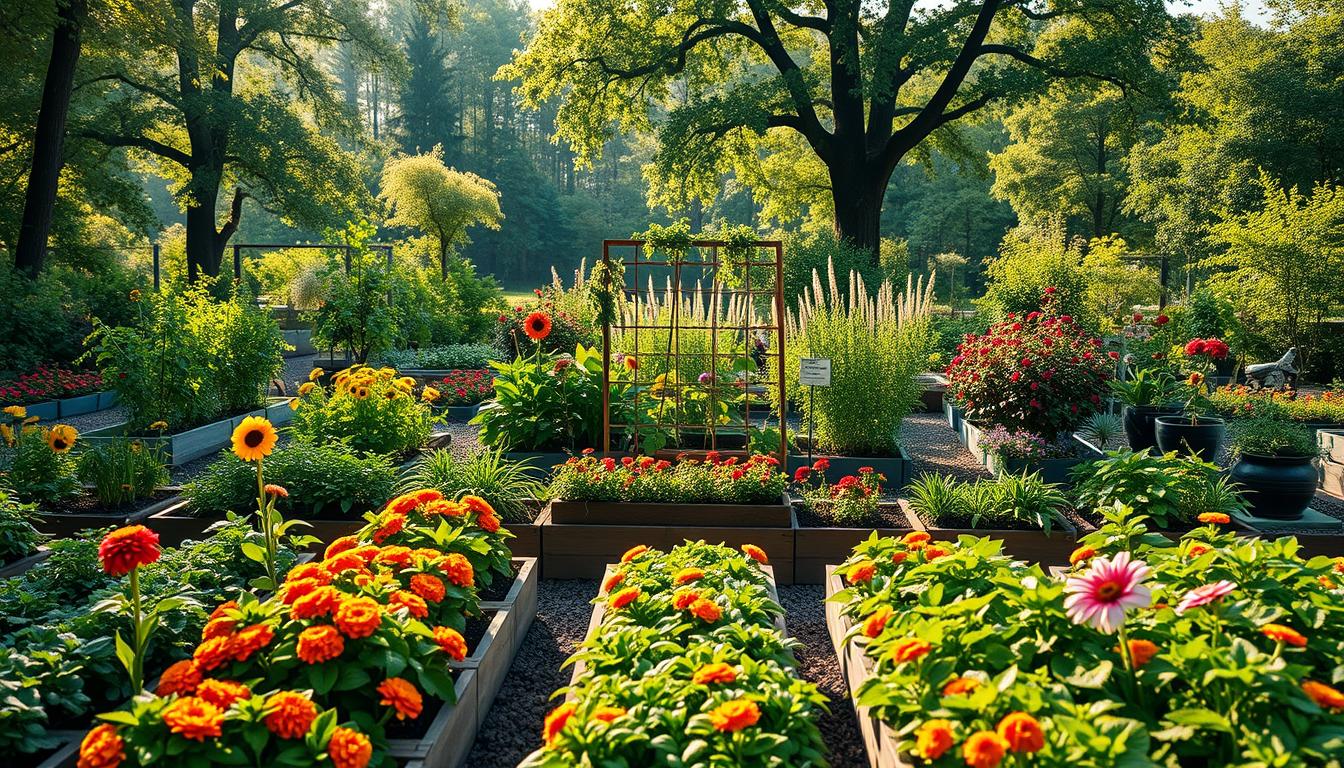Have you ever wandered through a garden and felt an overwhelming sense of peace and harmony? Each plant, perfectly positioned beside its neighbors, working together to create a vibrant ecosystem. This sense of beauty isn’t just a visual delight; it’s a reflection of the principles of companion planting. By optimizing your space through a thoughtful companion planting garden layout, you can transform your garden into a flourishing sanctuary. Picture the anticipation of watching your crops thrive, not just in abundance but also in health, thanks to the benefits of sustainable garden layout techniques. With the right arrangements, you’re not only nurturing your plants but also fostering a healthier environment.
Key Takeaways
- Companion planting improves biodiversity and plant health.
- A well-planned garden layout maximizes space efficiency.
- Sustainable gardening techniques lead to a thriving ecosystem.
- Effective plant pairings can enhance pest control naturally.
- Optimized layouts contribute to healthier crop yields.
What is Companion Planting?
Companion planting refers to a gardening strategy where different plant species are grown together, allowing them to benefit one another. This approach not only maximizes your garden’s space but also enhances growth, flavor, and pest resistance. By incorporating best companion plants, your garden can enjoy improved pollination, natural pest repellent properties, and efficient nutrient utilization. Research has shown that employing companion planting techniques can lead to significantly higher yields, thanks to the synergistic relationships established between the plants.
Definition and Benefits
The concept of companion planting revolves around selecting and positioning plants that promote each other’s growth and health. Here are some benefits:
- Enhanced growth and productivity
- Improved pest control by deterring harmful insects
- Better space utilization through strategic plant placement
Historical Background
This method of gardening is steeped in history, with indigenous cultures practicing various forms of companion planting. For instance, the “Three Sisters” technique combines corn, beans, and squash in a manner that closely aligns with the principles of sustainability and ecological balance. Such practices not only ensured food security but also laid the groundwork for modern-day companion planting guides. By understanding historical methods, you can appreciate the depth and wisdom rooted in these agricultural techniques.
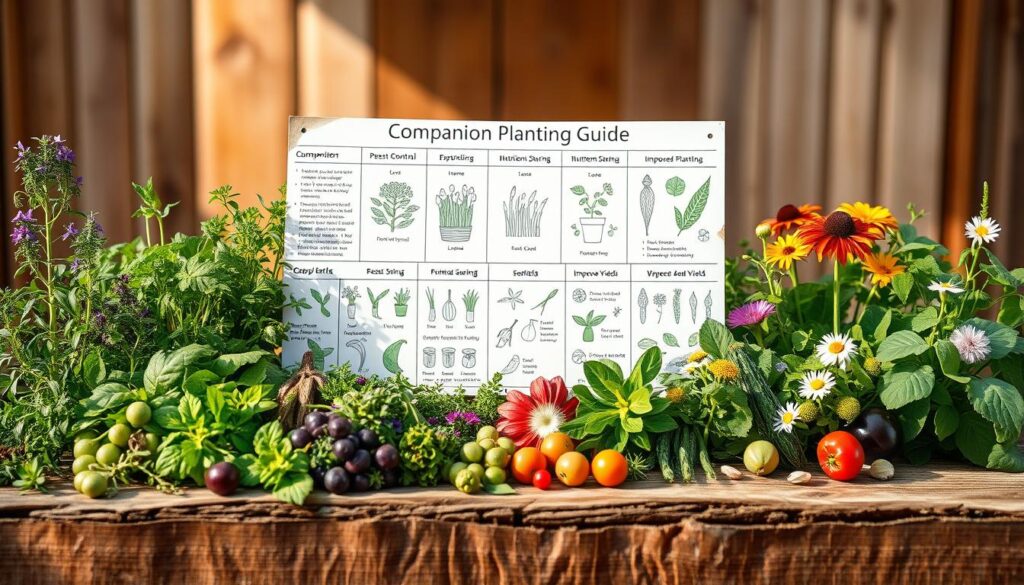
The Science Behind Companion Planting
Understanding the interactions among plants is essential for successful companion planting. These relationships can significantly impact your garden’s health and productivity. By strategically creating optimal plant arrangements, you can foster an environment where plants thrive together, benefiting from one another.
How Plants Interact
Certain plants release chemicals that enhance soil nutrients, attract beneficial insects, or deter harmful pests. For instance, basil is known to improve the growth and flavor of tomatoes while simultaneously keeping pests like tomato hornworms at bay. This type of beneficial plant pairing exemplifies how thoughtful arrangements can yield remarkable results.
Pest Control and Natural Solutions
Companion planting offers a sustainable garden layout, providing natural pest control without relying on synthetic pesticides. Specific plant combinations can effectively deter various pests. Marigolds, for example, are effective in repelling nematodes and other garden nuisances. Utilizing these natural solutions not only promotes the health of your plants but also contributes to an environmentally friendly gardening practice.
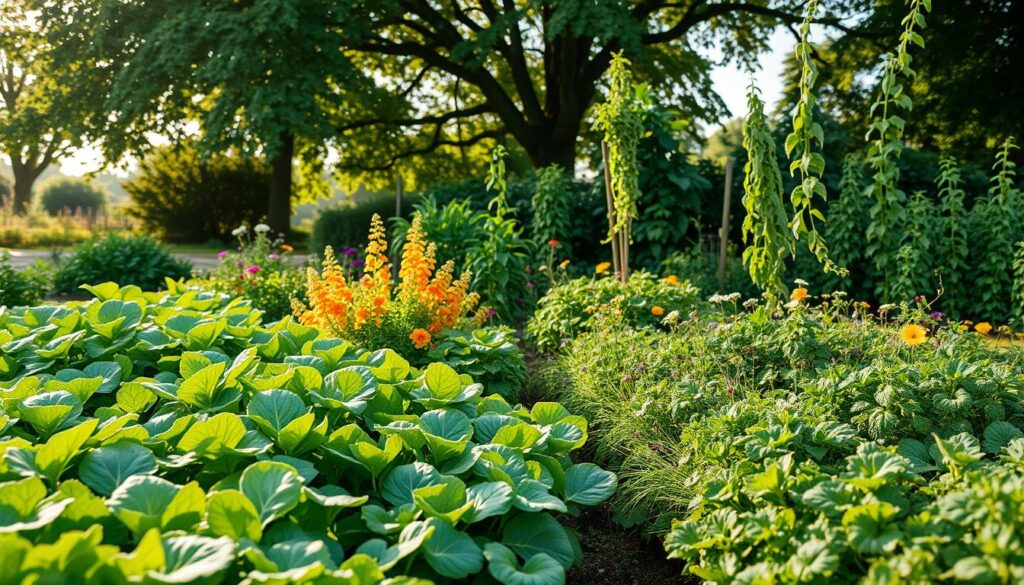
Popular Companion Planting Combinations
Discovering the best companion plants can significantly impact the success of your garden. Certain combinations not only enhance flavors but also promote healthier plants. Here are some popular pairings to consider.
Tomatoes and Basil
This duo is among the most celebrated in companion planting. Tomatoes thrive alongside basil, as this herb repels common pests like aphids and whiteflies that typically target tomatoes. The aromatic flavor profile of basil can also enhance the taste of your tomatoes, making it one of the best companion plants for home gardeners.
Carrots and Onions
Another classic combination is carrots and onions. These vegetables occupy different levels in the soil, allowing them to grow side by side without competing for resources. Utilizing this pairing can enhance your garden’s productivity, showcasing the effect of companion planting techniques in maximizing yields.
Corn, Beans, and Squash
The “Three Sisters” method demonstrates a traditional approach to companion planting. Corn provides vertical growth, beans contribute nitrogen-fixing benefits, and squash serves as ground cover. This synergistic relationship not only optimizes space but also promotes overall garden health. Implementing this strategy showcases some of the best companion plants, creating a harmonious and abundant garden environment.
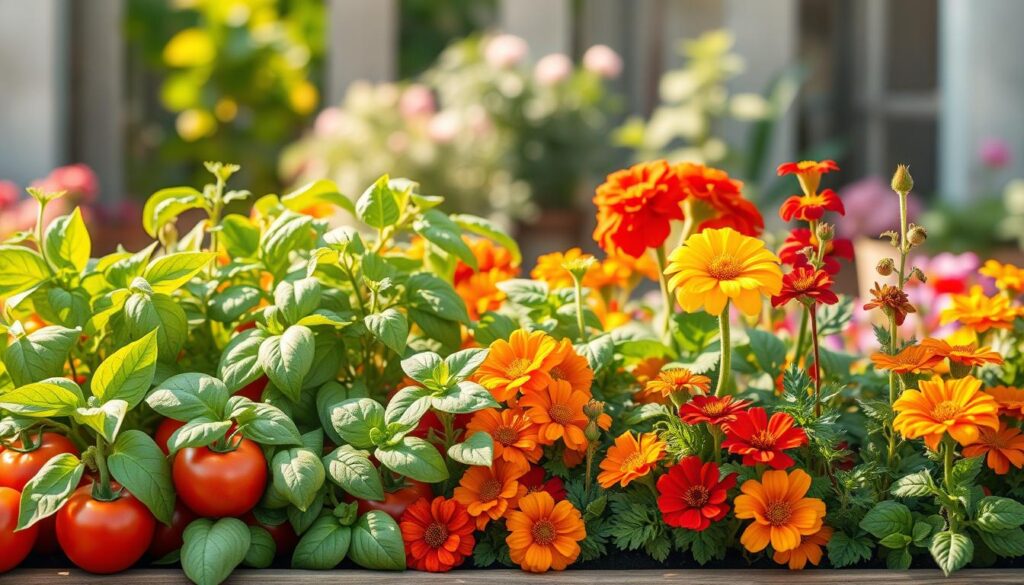
Planning Your Companion Planting Layout
Creating a successful companion planting garden layout requires careful planning and consideration of various factors. Begin by assessing your garden space to maximize productivity and plant health. Take note of soil quality, sunlight exposure, and water accessibility, as these elements influence the overall success of your plants.
Assessing Your Garden Space
Start by walking through your garden to identify areas that can best support your companion planting garden layout. Look for sections with rich soil, good drainage, and minimal competing plants. Evaluate the overall size, as it will help determine how many plants you can include in your plan. Common areas to note are:
- Areas with full sun
- Shady spots for shade-tolerant plants
- Consistent water access such as near a spigot or rain barrel
Considering Sunlight and Water Access
Sunlight is a critical component of any garden. The height and growth of your plants can influence how much light other plants receive. Taller plants may cast shadows, affecting those with lower light requirements. Water access is equally vital; ensure that each plant can get the moisture it needs for healthy growth. Here are some key considerations:
| Consideration | Importance |
|---|---|
| Sunlight Exposure | Essential for photosynthesis; affects growth rate and fruit yield |
| Water Accessibility | Supports healthy root systems; prevents stress during dry spells |
| Soil Quality | Rich soil promotes nutrient availability; essential for plant health |

Incorporating these elements into your companion planting garden layout will help foster an environment conducive to plant synergy and productivity. Each decision you make during this planning stage lays the groundwork for a thriving garden that benefits from the harmonious relationships between plant partners.
Designing Your Garden Layout
Creating an effective garden layout is essential for achieving optimal plant arrangements. Your choice of planting method can influence not only the space you utilize but also the health and yield of your plants. Understanding the differences between grid and row planting can help you decide the best approach for your garden needs.
Grid vs. Row Planting
Grid planting is ideal for small spaces where maximizing available areas is crucial. This method allows for a denser arrangement of plants, minimizing pathways while maximizing the number of plants you can grow. On the other hand, row planting is a smart choice for larger gardens where ease of access during harvesting matters. You may find that this layout provides a clearer organization and a more straightforward approach to maintenance.
Utilizing Vertical Space
Incorporating vertical gardening techniques can transform your sustainable garden layout. By using structures like trellises or A-frames, you can support climbing plants and create a layered arrangement. This not only encourages a diverse variety of plants in a confined space but also enhances air circulation and sunlight exposure. Embracing vertical gardening is an excellent strategy for achieving optimal plant arrangements and maximizing the productivity of your garden.

Timing Your Planting
Understanding the timing of your planting is crucial in a successful companion planting guide. Adopting seasonal planting strategies and succession planting methods keeps your garden productive throughout the changing seasons. By effectively planning your crops, you can maximize your yields while ensuring healthy plant relationships.
Seasonal Planting Strategies
Utilizing seasonal planting strategies allows you to optimize garden use year-round. Sowing a mix of cool-season and warm-season crops will enable you to take advantage of different growing conditions. This staggered approach not only enhances your harvesting potential but also promotes continuous production. Incorporating diverse varieties in your planting schedule ensures that you’re always ready to enjoy fresh produce.
Succession Planting Methods
Succession planting methods play a vital role in maximizing garden efficiency. This technique involves planting new seeds as soon as older crops are harvested. By filling gaps immediately, you ensure that no space goes unused. As a result, this not only contributes to higher yields but also supports better resource utilization. Implementing this method is a key factor for thriving companion planting techniques.
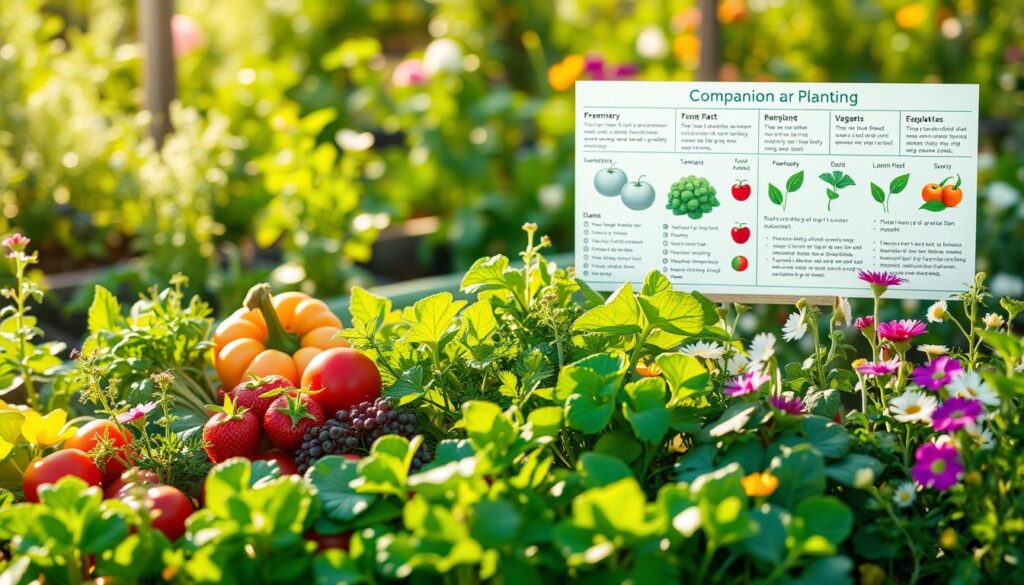
Soil Preparation for Companion Plants
Soil preparation forms the foundation of a successful organic gardening layout. Healthy soil contributes to robust plant growth and fosters beneficial relationships among companion plants. Taking the time to assess and improve your soil can lead to a thriving garden.
Testing Soil Health
To ensure your garden flourishes, testing soil health is essential. This process involves examining nutrient levels and pH balance. You can utilize soil testing kits available at garden centers or send samples to a local cooperative extension. Results from these tests guide you on the amendments needed to create optimal conditions for your plants.
Amending Soil for Compatibility
When working with an organic gardening layout, consider amending your soil to enhance compatibility among various plant species. Adding organic matter, such as compost, enriches the soil with essential nutrients and improves structure, promoting better root development and moisture retention. Pay attention to the specific needs of the plants listed in your companion planting chart for the best results.

| Amendment | Benefits |
|---|---|
| Compost | Improves soil fertility and structure |
| Perlite | Enhances drainage and aeration |
| Bone Meal | Boosts phosphorus levels for root growth |
| Mulch | Conserves moisture and suppresses weeds |
Watering Techniques for Companion Gardens
Effective watering techniques play a vital role in achieving a flourishing sustainable garden layout. Utilizing precise methods ensures that your companion plants receive just the right amount of moisture, promoting healthy growth and minimizing waste.

Efficient Irrigation Methods
Consider implementing drip irrigation or soaker hoses for an efficient watering solution. These systems provide consistent moisture directly to the root zone, fostering deep root growth. By minimizing water evaporation and runoff, you maximize water efficiency, an essential aspect of any sustainable gardening effort.
Mulching for Moisture Retention
Mulching is another effective strategy that not only conserves soil moisture but also suppresses weeds, enhancing the overall health of your companion garden. Using organic materials like straw or shredded leaves offers dual benefits; not only do they retain moisture, but they also enrich the soil as they decompose. This method complements any organic gardening layout, ensuring your plants thrive with the right conditions.
Fertilization Tips for Companion Planting
Understanding how to effectively fertilize your garden can significantly impact the success of your companion planting techniques. Different plants possess unique nutrient requirements, making it essential to choose the right type of fertilizer—organic or synthetic—for optimal growth.
Organic vs. Synthetic Fertilizers
Opting for organic fertilizers often promotes long-term soil health, enhancing the presence of beneficial microorganisms. These natural options release nutrients slowly, providing a sustained source of nourishment for your plants. On the other hand, synthetic fertilizers deliver quick results, which might seem advantageous initially. However, they may lead to nutrient imbalances over time. A balanced approach that incorporates both types can foster robust plant development.
Nutrient Needs of Different Plants
Being aware of the specific nutrient needs of the best companion plants can optimize your garden layout. For example, nitrogen-hungry beans flourish alongside plants like corn, which can absorb excess nutrients. Grouping plants with complementary nutrient requirements enhances productivity and promotes healthier growth in your garden.
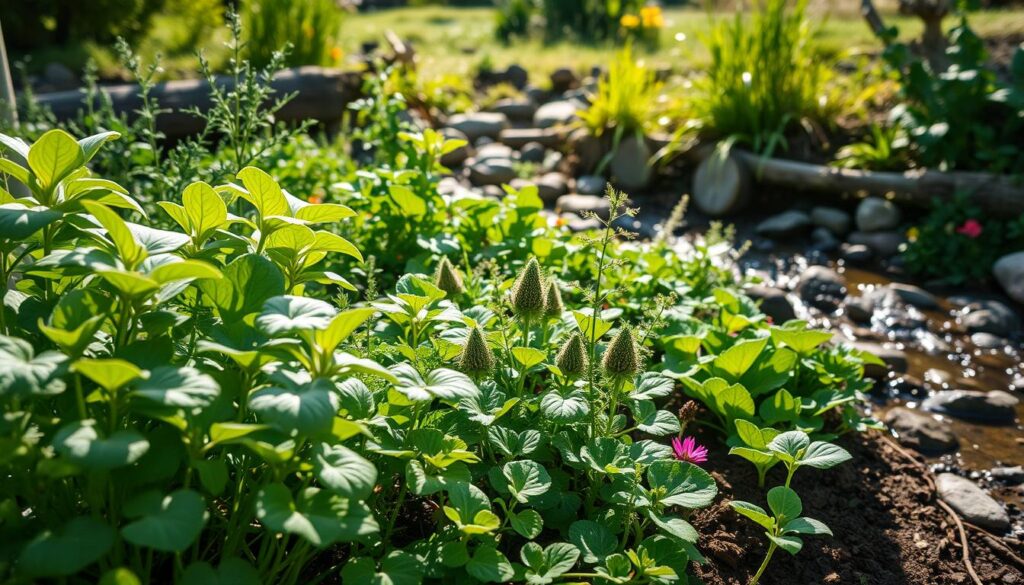
Common Mistakes in Companion Planting
When embarking on your companion planting journey, it’s essential to be aware of some common mistakes in companion planting that can negatively impact your garden’s success. Understanding and avoiding these pitfalls can lead to healthier plants and improved yields.
Overcrowding Plants
One prevalent error is overcrowding plants. Adequate spacing allows for better airflow, ensuring that each plant has enough access to sunlight and nutrients. Overly dense planting can lead to competition for resources, ultimately diminishing plant health and reducing yields. Strive for a layout that gives ample room for growth.
Ignoring Plant Compatibility
Another frequent mistake is ignoring plant compatibility. Not all plants benefit from being in close proximity; some may even hinder each other’s growth or attract pests. It’s crucial to research which plants thrive together and avoid pairing those that compete for the same resources. Proper planning based on compatible pairings is essential for achieving an ideal garden design.

| Mistake | Description | Impact |
|---|---|---|
| Overcrowding | Planting too closely, reducing airflow. | Decreased yield and health. |
| Ignoring Compatibility | Combining plants with conflicting needs. | Competition for resources and pest attraction. |
Maintenance Strategies for Companion Gardens
Maintaining a thriving companion garden requires consistent attention and care. A well-thought-out companion planting guide can serve as your roadmap to a successful garden. Regular monitoring ensures that each plant develops optimally, and it allows you to address any issues before they escalate. With diligence, you can foster a robust ecosystem that benefits from diverse plant interactions.
Regular Monitoring and Care
Paying attention to your garden is vital. Regularly check on the growth and overall health of your plants. Look for signs of distress such as yellowing leaves or stunted growth. Keeping a close eye enables you to implement timely measures that can enhance your plants’ vitality. Remember that a sustainable garden layout can boost efficiency in your gardening efforts.
Pest and Disease Management
Proactive pest management is essential in a companion planting arrangement. Utilizing beneficial insects like ladybugs and lacewings can help control pest populations naturally. Noticing the early signs of infestation allows for quick intervention. Maintain garden hygiene by promptly removing diseased plants, which prevents the spread of problems that may affect your entire garden. An effective companion planting guide will detail these strategies, ensuring your garden thrives.
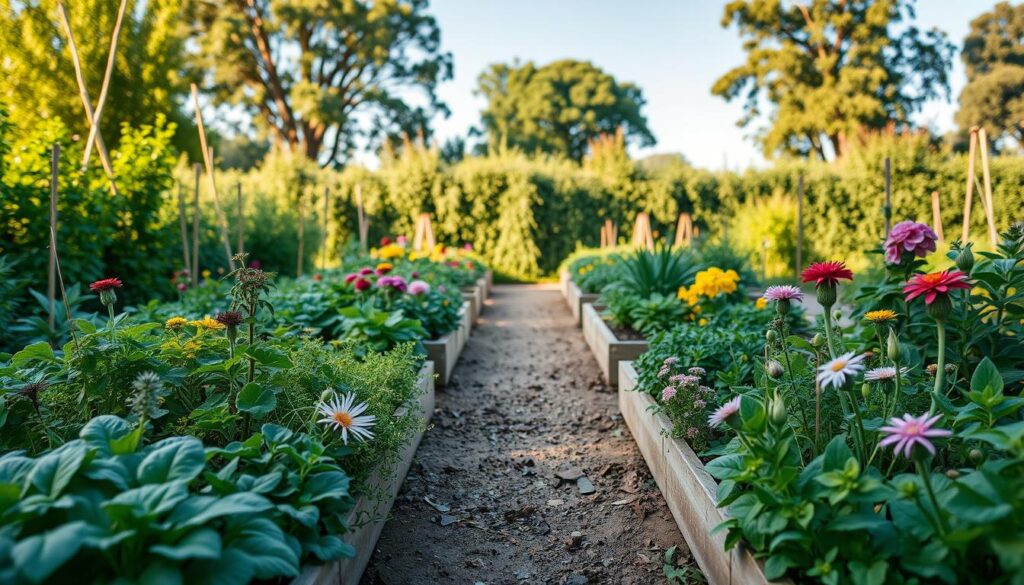
Harvesting from Your Companion Garden
Harvesting from your companion garden requires attention to techniques and timing. Following best practices ensures that plants thrive and provide sustainable yields year after year. Key methods include careful cutting to preserve roots, allowing for ongoing growth and productivity, which benefits the entire garden ecosystem.
Best Practices for Harvesting
When you approach harvesting, consider adopting specific techniques. Cutting at the base rather than pulling can promote healthy root systems, enhancing future harvests. Use clean and sharp tools to prevent damage, and ensure you harvest in the early morning for cooler temperatures. This helps preserve flavor and nutrient content.
Timing Your Harvest for Maximum Flavor
Timing plays a crucial role in the flavor and quality of your produce. Each plant has an optimal harvest window. For example, carrots should be harvested when they reach a certain size to maximize their sweetness. Utilize a companion planting chart to understand the best times for each type of plant in your garden layout. This approach not only enhances taste but also contributes to a more enjoyable cooking experience.
| Plant | Optimal Harvest Timing | Flavor Profile |
|---|---|---|
| Carrots | 2-3 months after planting | Sweet and crisp |
| Basil | Before flowering | Strong and aromatic |
| Tomatoes | When fully colored | Rich and juicy |
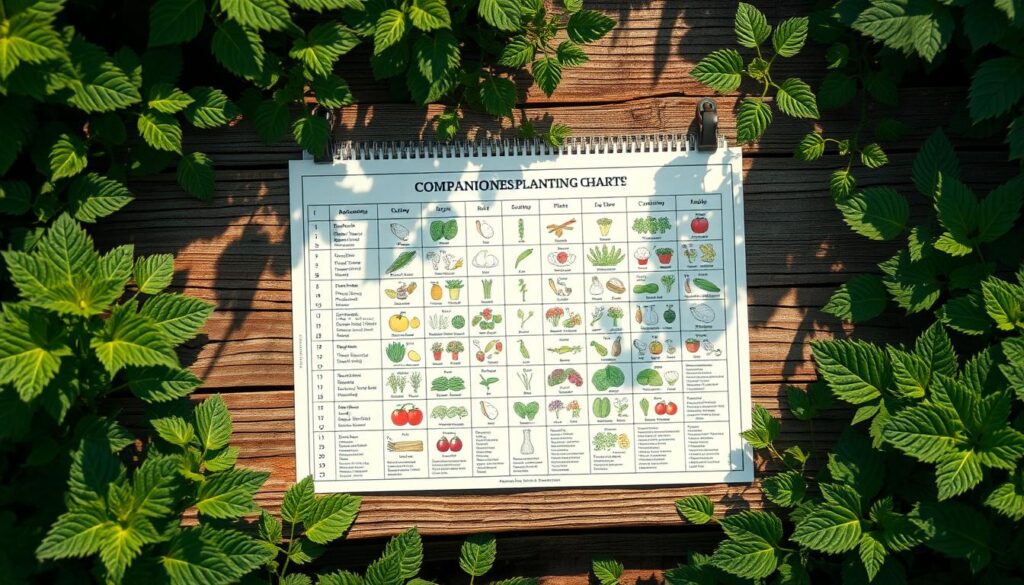
Expanding Your Companion Planting Knowledge
Diving deeper into the world of companion planting can significantly enhance your gardening skills and outcomes. To broaden your understanding, explore various resources and workshops. You can find a wealth of information in books and online articles that serve as comprehensive companion planting guides. These resources equip you with essential techniques and best practices, empowering you to make informed decisions in your garden.
Participating in workshops can connect you with seasoned gardeners who can share practical advice and insights. Engaging with experts in structured settings fosters an environment for growth, allowing you to refine your planting strategies effectively.
Another great way to expand your companion planting knowledge is by joining community gardening groups. These groups offer an excellent platform for exchanging experiences and learning diverse planting techniques. Collaborating with other gardeners not only deepens your understanding but also broadens your network. You’ll find that sharing resources and insights within these communities leads to a more successful and fulfilling gardening journey.
